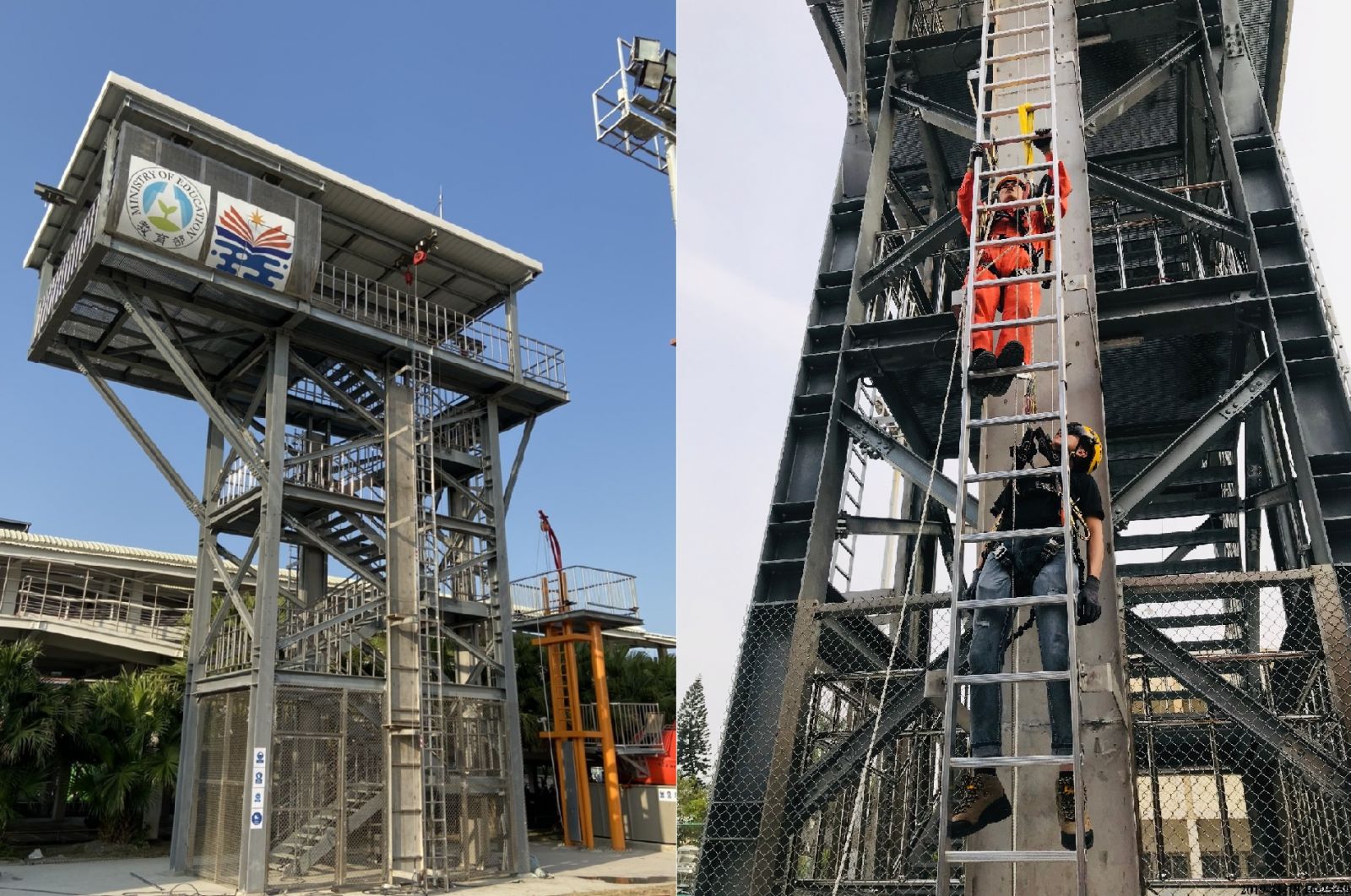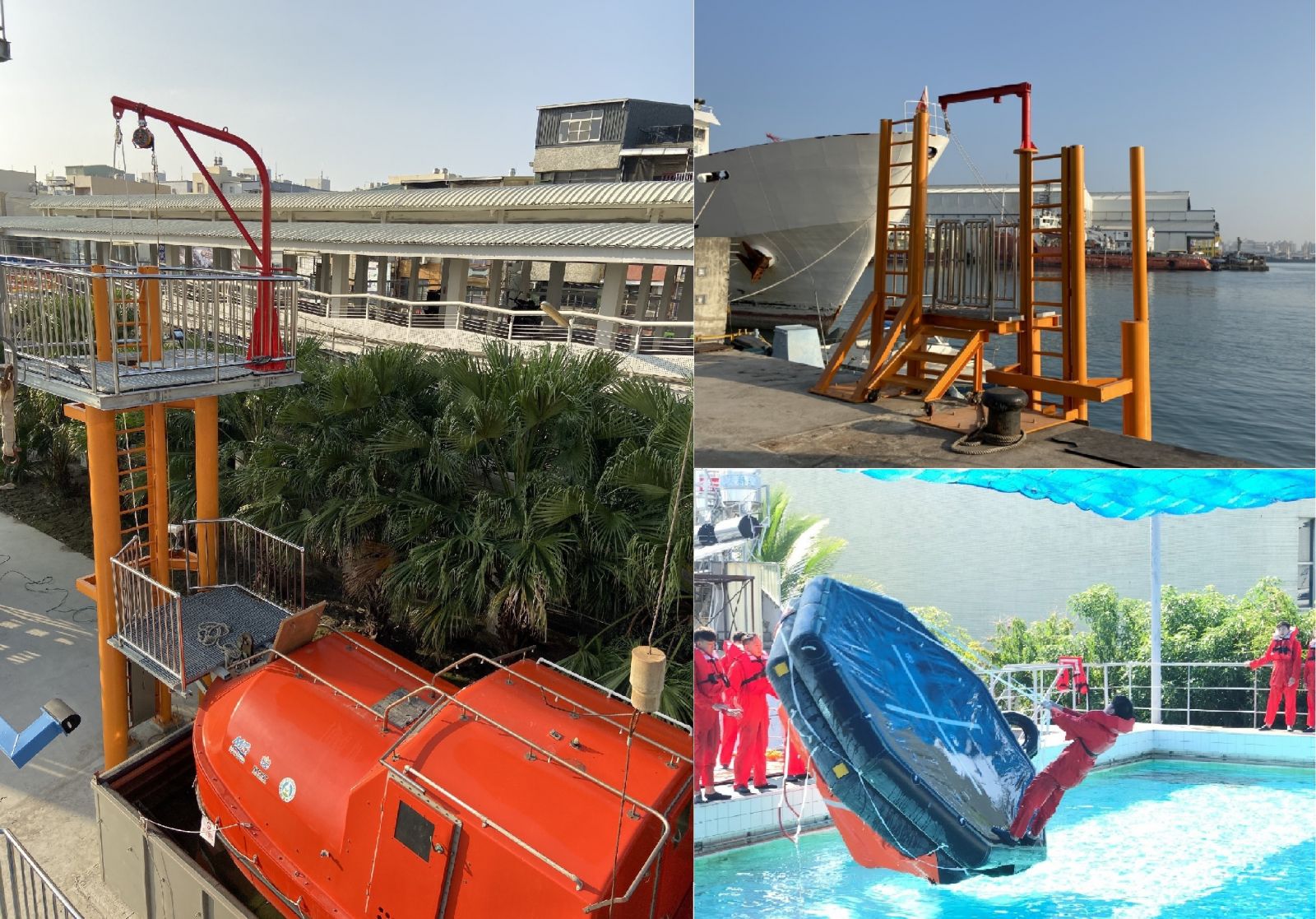| Item | Description |
|---|---|
| Subject | GWO Basic Safety Training (BST) |
| Qualifications | Persons who want to engage in offshore wind power related industries |
| Carrying Items | 1.Identification card or passport 2.Personal laundry |
| Training Days | 4.5 days (36 hours) |
| Location | No. 482, Zhongzhou 3rd Road, Qijin District, Kaohsiung City Taiwan (R.O.C) |
| Procedure | Go to online registration and select wind power training |
| Information | Please make sure that you have registered WINDA ID at https://winda.globalwindsafety.org/register/ before registering.The training must record your WINDA ID during the registration. |
Course Introduction
First Aid
In accordance with the GWO first aid training course, we utilize theoretical concepts and practical training to guide students to manage and perform a series of safe and effective first aid in the offshore wind power industry and environment. Our university has established professional training classrooms for first aid courses, and also set up complete first aid equipment, in order for the trainees to learn comprehensive knowledge.
.jpg)
Course content
1. Understand the importance of carrying out first aid in a safe and sound manner in accordance with the legislative requirements of their geographic location.
2. Identify and explain normal functions, normal physical signs, functions and symptoms of serious and minor injuries and illness related to the human body.
3. Understand the correct order of management in an emergency situation in a Wind Turbine Generator (WTG) environment.
Manual Handling
For manual operation training courses, we provide simulation training in different fields, and use the theoretical knowledge and practical training to improve and update the training content. Ensure that the trainees are able to demonstrate understanding of the importance of carrying out work duties in a safe and sound manner, in accordance with the legislative requirements of their work location. The trainees shall not only able to identify aspects of their job tasks that could increase their risk of developing muscular/ skeletal injuries, but also demonstrate understanding of safe practices of manual operation, including the correct operation of equipment to solve manual handling issues.
.jpg)
Course content
1. Risk factors, hazards, regulations and protection measures of manual operation and handling.
2. Human spinal anatomy and correct handling posture.
3. T.I.L.E principle and assessing aggravation factors and risks.
4. Handling techniques and scenario-based training.
Working at Heights
At present, the height of offshore wind turbines can be well over 100 meters. In order to have the trainees experience the aerial work setting more directly, our university discussed with foreign professional trainers to jointly plan a tower with a total height of about 12 meters, which is close to the standing height of 10.3 meters, i.e. the height human beings fear the most physiologically; this tower simulates abseiling and rescue survival to overcome psychological obstacles. Moreover, in order to simulate more closely to the actual wind turbine, it is designed with three different fall prevention systems for the training of climbing ladders, so that trainees can learn to wear various personal protective equipment such as full-body safety harness, working position ropes and hook ropes, and go from theoretical principles to practical hands-on aerial work training courses. This will give the trainees a chance to practice their skills, learn to self-protect and undergo rescue training in a setting that is closer to actual wind turbine environment.

Course content
1. Risk factors, hazards, regulations and protection measures of aerial work.
2. Functional operation, inspection and management of various Personal Protection Equipment (PPE).
3. Personal Protection Equipment (PPE) such as various fall prevention systems, fall arresters, hanging ropes, work positioning ropes and rescue tools, etc. for actual operation.
4. Abseiling practice drill.
5. Emergency rescue practice drill.
Fire Awareness
Provide trainees with basic knowledge and skills, and enable them to prevent fires through theoretical and practical training, make appropriate judgments when assessing fires, manage personnel evacuation, and ensure that all personnel are handled safely in the event of an uncontrollable fire.
Our university's fire protection practice area is the only fire extinguishing area in Taiwan that has both wind and crew training; we have ship cabin, wind turbine engine room simulation space, multiple simulated fire points and various fire suppression systems. During the training, trainees will improve on fire-related knowledge, self-protection concepts, recognize different fire situations, exercise related fire-fighting equipment, be familiar with fire-fighting rescue procedures and escape methods.
.jpg)
Course content
1. Introduction and regulations.
2. Fire combustion and fire spread.
3. Practice and scenario-based training.
4. Firefighting equipment in a WTG.
Sea Survival
This department has professional training grounds, professional teachers and lifeguards. The survival training site is equipped with diving platforms and helicopter suspension devices. It also has a transition piece for land practice and sea experience. The climbing action to the wind turbine operation can take corrective and preventive measures no matter in normal weather, or in the changing environment of the wind field, or in critical situations.

Course content
1. Understanding the environment and regulations.
2. Practice sea survival skills in the sea.
3. Life Saving Appliances (LSA) and Personal Protection Equipment (PPE).
4. Safe transfer and transfer practice.
5. States of Exposure, Cold Shock, Hypothermia and Drowning.
6. Search and Rescue (SAR) and Global Maritime Distress and Safety System GMDSS, actions to enhance detection.
7. Comprehensive drill, signal flare.
In accordance with the GWO first aid training course, we utilize theoretical concepts and practical training to guide students to manage and perform a series of safe and effective first aid in the offshore wind power industry and environment. Our university has established professional training classrooms for first aid courses, and also set up complete first aid equipment, in order for the trainees to learn comprehensive knowledge.
.jpg)
Course content
1. Understand the importance of carrying out first aid in a safe and sound manner in accordance with the legislative requirements of their geographic location.
2. Identify and explain normal functions, normal physical signs, functions and symptoms of serious and minor injuries and illness related to the human body.
3. Understand the correct order of management in an emergency situation in a Wind Turbine Generator (WTG) environment.
Manual Handling
For manual operation training courses, we provide simulation training in different fields, and use the theoretical knowledge and practical training to improve and update the training content. Ensure that the trainees are able to demonstrate understanding of the importance of carrying out work duties in a safe and sound manner, in accordance with the legislative requirements of their work location. The trainees shall not only able to identify aspects of their job tasks that could increase their risk of developing muscular/ skeletal injuries, but also demonstrate understanding of safe practices of manual operation, including the correct operation of equipment to solve manual handling issues.
.jpg)
Course content
1. Risk factors, hazards, regulations and protection measures of manual operation and handling.
2. Human spinal anatomy and correct handling posture.
3. T.I.L.E principle and assessing aggravation factors and risks.
4. Handling techniques and scenario-based training.
Working at Heights
At present, the height of offshore wind turbines can be well over 100 meters. In order to have the trainees experience the aerial work setting more directly, our university discussed with foreign professional trainers to jointly plan a tower with a total height of about 12 meters, which is close to the standing height of 10.3 meters, i.e. the height human beings fear the most physiologically; this tower simulates abseiling and rescue survival to overcome psychological obstacles. Moreover, in order to simulate more closely to the actual wind turbine, it is designed with three different fall prevention systems for the training of climbing ladders, so that trainees can learn to wear various personal protective equipment such as full-body safety harness, working position ropes and hook ropes, and go from theoretical principles to practical hands-on aerial work training courses. This will give the trainees a chance to practice their skills, learn to self-protect and undergo rescue training in a setting that is closer to actual wind turbine environment.

Course content
1. Risk factors, hazards, regulations and protection measures of aerial work.
2. Functional operation, inspection and management of various Personal Protection Equipment (PPE).
3. Personal Protection Equipment (PPE) such as various fall prevention systems, fall arresters, hanging ropes, work positioning ropes and rescue tools, etc. for actual operation.
4. Abseiling practice drill.
5. Emergency rescue practice drill.
Fire Awareness
Provide trainees with basic knowledge and skills, and enable them to prevent fires through theoretical and practical training, make appropriate judgments when assessing fires, manage personnel evacuation, and ensure that all personnel are handled safely in the event of an uncontrollable fire.
Our university's fire protection practice area is the only fire extinguishing area in Taiwan that has both wind and crew training; we have ship cabin, wind turbine engine room simulation space, multiple simulated fire points and various fire suppression systems. During the training, trainees will improve on fire-related knowledge, self-protection concepts, recognize different fire situations, exercise related fire-fighting equipment, be familiar with fire-fighting rescue procedures and escape methods.
.jpg)
Course content
1. Introduction and regulations.
2. Fire combustion and fire spread.
3. Practice and scenario-based training.
4. Firefighting equipment in a WTG.
Sea Survival
This department has professional training grounds, professional teachers and lifeguards. The survival training site is equipped with diving platforms and helicopter suspension devices. It also has a transition piece for land practice and sea experience. The climbing action to the wind turbine operation can take corrective and preventive measures no matter in normal weather, or in the changing environment of the wind field, or in critical situations.

Course content
1. Understanding the environment and regulations.
2. Practice sea survival skills in the sea.
3. Life Saving Appliances (LSA) and Personal Protection Equipment (PPE).
4. Safe transfer and transfer practice.
5. States of Exposure, Cold Shock, Hypothermia and Drowning.
6. Search and Rescue (SAR) and Global Maritime Distress and Safety System GMDSS, actions to enhance detection.
7. Comprehensive drill, signal flare.

